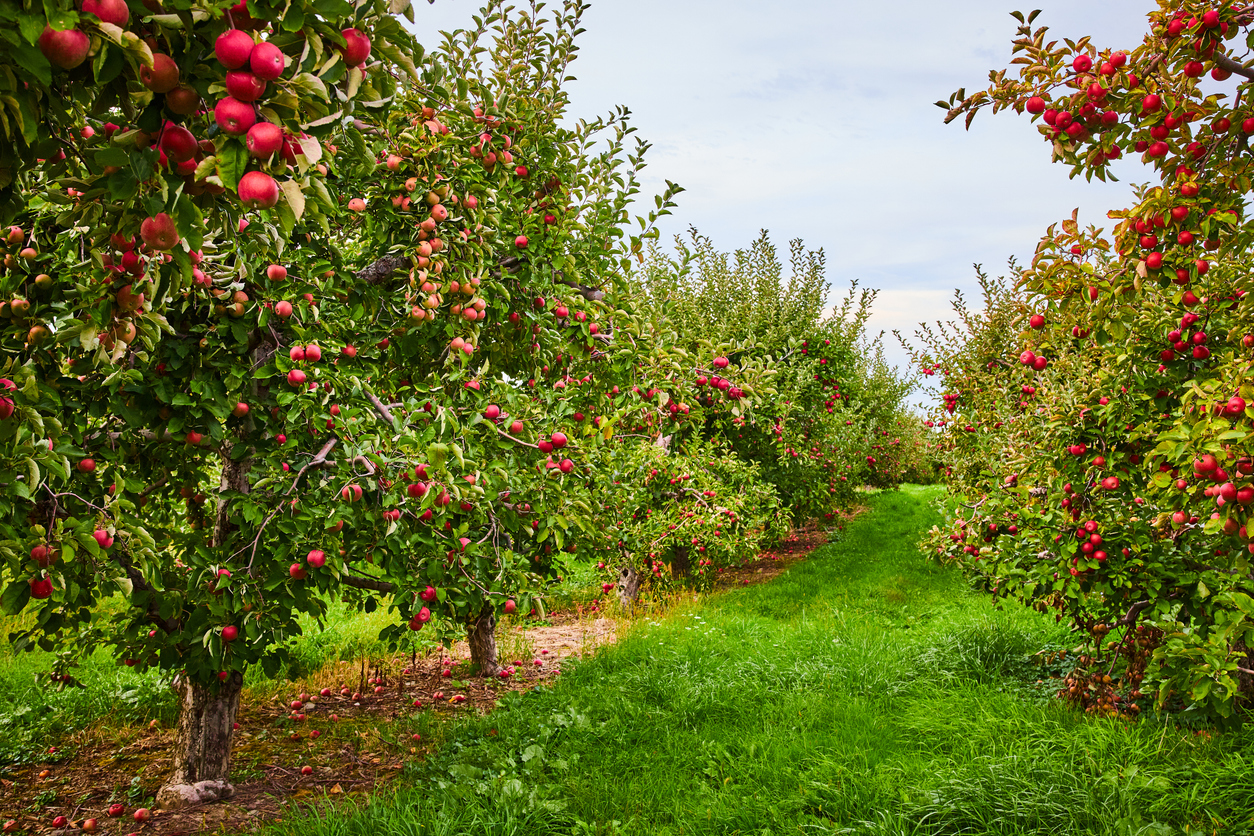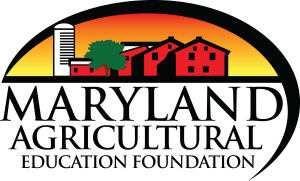
Rows of apple trees on an orchard farm
Apples and Genetics
Grade 6-8
This lesson focuses on two main ideas:
- How the DNA of an apple and mutations can lead to variation in apples.
- How farmers can use genetics and inheritance to crossbreed certain apples = to produce ones with desired traits.
Procedure
INTRODUCTION (15 minutes)
Read the introduction to students and review new vocabulary. Students will watch the "Maryland Farm and Harvest - Episode 1005 - Apples and Genetics ” video. After the video, discuss the essential questions and thinking questions aligned to the topic and video. Discuss with students the career connections related to apples and genetics.
EXTENSION (15-30 minutes)
Complete extension activities with students, as you deem appropriate.
ASSESSMENT (15 minutes)
Have students apply their newfound knowledge by completing a Summative CER on the lesson using evidence from the video and activities as support.
REFLECTION (10 minutes)
Have students complete a reflection.
Standards
MS-LS3-1 Heredity: Inheritance and Variation of Traits
Develop and use a model to describe why structural changes to genes (mutations) located on chromosomes may affect proteins and may result in harmful, beneficial, or neutral effects to the structure and function of the organism.
- Science and Engineering Practices
Developing and Using Models
Modeling in 6–8 builds on K–5 experiences and progresses to developing, using, and revising models to describe, test, and predict more abstract phenomena and design systems.- Develop and use a model to describe phenomena.
- Disciplinary Core Ideas
LS3.A: Inheritance of Traits
- Genes are located in the chromosomes of cells, with each chromosome pair containing two variants of each of many distinct genes. Each distinct gene chiefly controls the production of specific proteins, which in turn affects the traits of the individual. Changes (mutations) to genes can result in changes to proteins, which can affect the structures and functions of the organism and thereby change traits.
LS3.B: Variation of Traits
- In addition to variations that arise from sexual reproduction, genetic information can be altered because of mutations. Though rare, mutations may result in changes to the structure and function of proteins. Some changes are beneficial, others harmful, and some neutral to the organism.
- Crosscutting Concepts
Structure and Function
- Complex and microscopic structures and systems can be visualized, modeled, and used to describe how their function depends on the shapes, composition, and relationships among its parts, therefore complex natural structures/systems can be analyzed to determine how they function.
Standard 2
Human Dependence on Earth Systems and Natural Resources:
Environmentally literate students construct and apply understanding of how Earth’s systems and natural resources support human existence.
Summative CER
Option 1:
Construct an argument regarding how the DNA of an apple plays a role in the size, shape, color, and taste of an apple. Use evidence and reasoning from the videos and activities to support your response.
Option 2:
Develop a scientific explanation regarding how farmers can grow and produce brand-new types of apples. Use evidence and reasoning from the videos and activities to support your explanation.
Reflection Questions
- How are there such a variety of apples that farmers can grow and produce?
- How can farmers use concepts related to genetics to their advantage when growing apples?
Summative CER Rubric
| Scoring Rubric Components | No Response Score Point 0 |
Not There Yet Score Point 0.5 |
Beginning To Score Point 0.75 |
Yes Score Point 1.0 |
|---|---|---|---|---|
| CLAIM | The claim is missing. | The claim is incorrect or irrelevant. | The claim partially takes a position on the topic or issue addressed within the prompt. | The claim takes an appropriate position on the topic or issue addressed within the prompt. |
| EVIDENCE | There is no type of evidence in the response. | The evidence is irrelevant or does not support the claim. | The evidence partially supports the claim and demonstrates some understanding of the topic or text, using appropriate sources. | The evidence supports the claim and demonstrates a strong understanding of the topic or text, using appropriate sources. |
| REASONING | There is no use of words, phrases, and clauses to create cohesion and to clarify the relationship between the claim and evidence. | Use of words, phrases and clauses fail to show or explain any relationship between the claim and evidence. | Scientific words, phrases, and clauses used lack cohesion but partially clarify the relationship between the claim and evidence. | Appropriate scientific words, phrases, and clauses are used to create cohesion and to clarify the relationship between the claim and evidence. |


